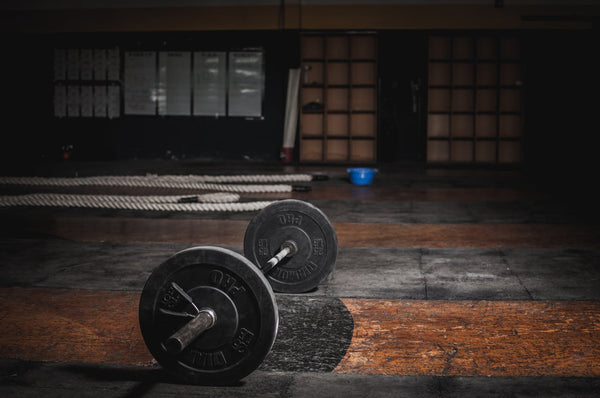From Vibration Plates to Shake Weights: Exploring the Biggest Fitness Trends That Flopped
Remember when everyone was buzzing about vibration plates? Or when the Shake Weight made headlines for its promise of toned arms in just minutes a day? These are just a couple of examples of fitness trends that seemed promising at first, but ultimately fizzled out. In this article, we'll take a trip down memory lane and explore some of the biggest fitness trends that flopped.
From bizarre gadgets to questionable workout routines, these trends often gained momentum thanks to savvy marketing and celebrity endorsements. But despite the initial hype, many of them failed to deliver on their promises or simply fell out of favor with the public.
We'll delve into the reasons behind their demise, examining the science (or lack thereof) behind the trends and the public's changing preferences. Whether it's the short-lived popularity of Zumba or the fleeting fame of ab machines, this article will uncover the stories behind these fitness fads and shed light on why they ultimately fell flat.
So, if you've ever been curious about the fitness trends that didn't stand the test of time, sit back, relax, and let's dive into this captivating journey through the biggest fitness flops.
The Rise and Fall of Vibration Plates
Vibration plates, also known as whole-body vibration machines, were once touted as the new secret to effortless weight loss and muscle toning. These machines claimed to stimulate muscles and increase blood flow using vibrations, all while you simply stood or sat on the platform. They gained popularity in the early 2000s and were heavily marketed as a quick and easy way to get fit.
But what seemed too good to be true, turned out to be just that. Despite the hype, scientific studies failed to support the claims made by manufacturers. The idea that standing on a vibrating platform could replace traditional exercise and yield the same results was simply a marketing gimmick.
Moreover, many users reported experiencing discomfort or even injuries due to the intense vibrations. The lack of long-term results and the potential health risks eventually led to the decline of vibration plates in the fitness industry. Today, you'll be hard-pressed to find a gym that still promotes these machines.
---
The Truth Behind Shake Weights
Ah, the Shake Weight. It burst onto the scene with its provocative commercials promising toned arms in just a few minutes of shaking. The concept seemed silly, but people were curious enough to give it a try. However, the reality behind the Shake Weight was far from what was advertised.
The idea behind the Shake Weight was that the shaking motion would engage the muscles in the arms, resulting in increased strength and toning. Unfortunately, the science didn't quite add up. Experts argued that the resistance provided by the Shake Weight was insufficient to produce any significant muscle gains.
Furthermore, the claims of quick results were nothing more than empty promises. Like many fitness trends, the Shake Weight relied on clever marketing and celebrity endorsements to generate buzz. But as people realized that the product didn't live up to its claims, its popularity quickly faded away.
---
The Short-Lived Hype of Vibrating Belts
Vibrating belts were another fitness trend that gained traction in the quest for effortless weight loss. These belts, often worn around the waist or other target areas, claimed to vibrate away fat and help users achieve a slimmer physique without breaking a sweat. However, the reality was far from the hype.
The idea behind vibrating belts was that the vibrations would stimulate the muscles and cause them to contract, mimicking the effects of exercise. However, studies showed that the vibrations were unlikely to have any significant impact on fat loss or muscle toning.
In fact, the vibrations may have even hindered the effectiveness of traditional exercise. By relying solely on the belt, users were neglecting the importance of a well-rounded fitness routine that includes cardiovascular exercise, strength training, and a balanced diet. As people became more educated about the science behind fitness, the popularity of vibrating belts quickly waned.
---
The Failed Promises of Toning Shoes
Remember when shoes promised to tone your legs and buttocks with every step? Toning shoes were all the rage, with their thick, curved soles that claimed to engage more muscles and increase calorie burn. However, the reality was quite different from the marketing hype.
Studies found that the toning shoes offered no significant advantage over regular athletic shoes. The supposed muscle-toning benefits were minimal at best, and the claims of increased calorie burn were largely unfounded. Additionally, many users reported discomfort and even injuries due to the unstable nature of the shoes.
As the scientific evidence mounted against toning shoes, their popularity began to decline. Today, you'll be hard-pressed to find anyone wearing these once-trendy footwear options at the gym or on the streets.
---
The Demise of the Thigh Master
In the 1990s, the Thigh Master became a household name thanks to its catchy infomercials featuring Suzanne Somers. This simple device promised to tone and sculpt the thighs with its squeezing action. However, as time went on, it became clear that the Thigh Master was nothing more than a passing fad.
The Thigh Master's claim to fame was its ability to target and tone the muscles in the inner and outer thighs. Unfortunately, the reality was that the Thigh Master provided limited resistance and failed to engage the muscles to the extent needed for significant results.
Moreover, the Thigh Master's focus on spot reduction was fundamentally flawed. The idea that you could tone a specific area of your body without losing overall body fat was a misconception that eventually led to the decline of this fitness trend.
---
The Forgotten Fad of Sauna Suits
Sauna suits, often made of waterproof fabric, gained popularity in the hope of achieving rapid weight loss through excessive sweating. These suits were designed to trap heat and increase body temperature, mimicking the effects of a sauna. However, the concept behind sauna suits was flawed from the start.
While wearing a sauna suit may indeed cause temporary weight loss through water loss, the results are not sustainable or healthy. The weight lost is simply water weight, which is quickly regained once rehydrated. In addition, excessive sweating can lead to dehydration and even heatstroke, making sauna suits potentially dangerous.
As people became more educated about the risks and lack of long-term benefits, sauna suits fell out of favor. The focus shifted towards sustainable weight loss methods that prioritize healthy eating, regular exercise, and overall well-being.
---
The Disappointing Reality of Fat-Burning Creams
Fat-burning creams were marketed as a magic potion that could melt away unwanted fat and cellulite. These creams claimed to contain special ingredients that could penetrate the skin and break down fat cells. However, the reality was far from the promises made by manufacturers.
Scientific studies consistently debunked the claims of fat-burning creams. The ingredients in these creams were unable to penetrate deep enough into the skin to have any significant impact on fat cells. Additionally, many creams contained questionable or unproven ingredients, further diminishing their credibility.
As people realized that fat-burning creams were nothing more than a marketing gimmick, their popularity declined. Today, these creams are seen for what they truly are: ineffective products that prey on people's desire for quick fixes.
---
Lessons Learned and the Importance of Sustainable Fitness
The rise and fall of these fitness trends serve as important reminders of the importance of sustainable fitness practices. While it's tempting to believe in quick fixes and shortcuts, the reality is that there are no shortcuts to achieving and maintaining a healthy lifestyle.
Sustainable fitness is about making long-term, realistic changes that prioritize overall health and well-being. It's about finding joy in movement, nourishing the body with nutritious foods, and adopting habits that can be maintained for a lifetime.
As we look back at the fitness trends that flopped, let's use them as lessons learned. Let's remember that there are no magic gadgets or miracle creams that can replace the hard work, dedication, and consistency required for lasting results. By focusing on sustainable fitness practices, we can avoid falling into the trap of fads and trends that ultimately lead to disappointment.
---
Conclusion: Separating Fact from Fiction in the Fitness Industry
In a world filled with fitness trends that come and go, it's important to separate fact from fiction. The fitness industry is notorious for its marketing tactics and promises of quick results. But as we've seen with the biggest fitness flops, these promises often fail to deliver.
As consumers, it's crucial to stay informed and skeptical of the latest fitness trends. Instead of chasing after quick fixes, let's focus on evidence-based practices that have stood the test of time. Let's prioritize sustainable fitness, nourishing our bodies, and finding joy in movement.
So, the next time a new fitness trend emerges, take a moment to consider the science behind it, the long-term sustainability, and the potential risks. By being discerning consumers, we can avoid falling for the next big flop and instead choose fitness practices that truly support our health and well-being.


